Did you know that there are about 37 trillion cells in the human body?! Even then, that's an estimate, so it could be more!

So we know that living organisms are made up of cells, and all living organisms carry out the seven life processes. Do you remember what these are?
Movement
Respiration
Sensitivity
Growth
Reproduction
Excretion
Nutrition
Organisms usually use different organ systems to carry out the life processes - for example, humans have a digestive system to help with nutrition and a circulatory system to help with respiration. These organ systems are made up of groups of tissues and organs that work together.
However, not all organisms have organ systems or even tissues. Some are only made up of one cell - we call these unicellular organisms. These unicellular organisms can still carry out the seven life processes, but only have one cell with which to do so. As they are only made up of one cell, unicellular organisms are extremely small and need a microscope to be seen.
An example of a unicellular cell is bacteria - you can see what a typical bacterial cell looks like below:
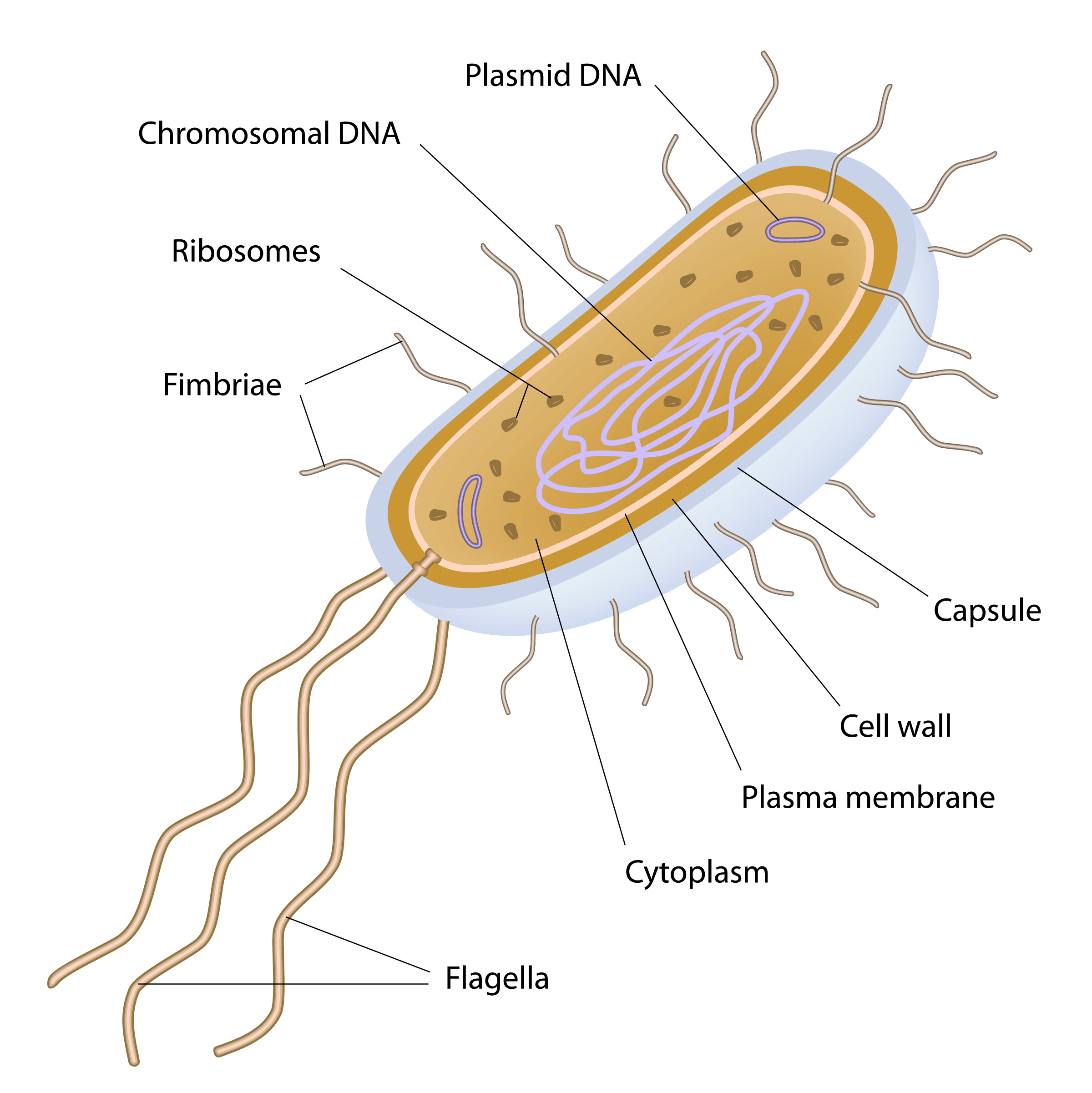
Did you notice that a bacterial cell doesn't have a nucleus? A cell without a nucleus is known as a prokaryotic cell. Instead, it has strands of DNA that are found in the cytoplasm. The cytoplasm is where the cell's chemical reactions happen. We can also find circular rings of DNA called plasmids in the cytoplasm - these are passed onto the next generation of bacterial cells during reproduction.
Bacteria also have a cell membrane (in this diagram it's called the plasma membrane). The cell membrane controls which substances can travel into and out of the cell, just as in an animal or plant cell.
A bacterial cell, like a plant cell, also has a cell wall. The cell wall is made up of protein (not cellulose as in plants) and provides strength and support.
Interestingly, this bacterial cell has something called flagella (not all bacterial cells have these). These flagella help the bacteria to move forward in liquids by rotating, a little like the propeller of a boat.
Other examples of unicellular organisms include yeast, which is a unicellular fungus:
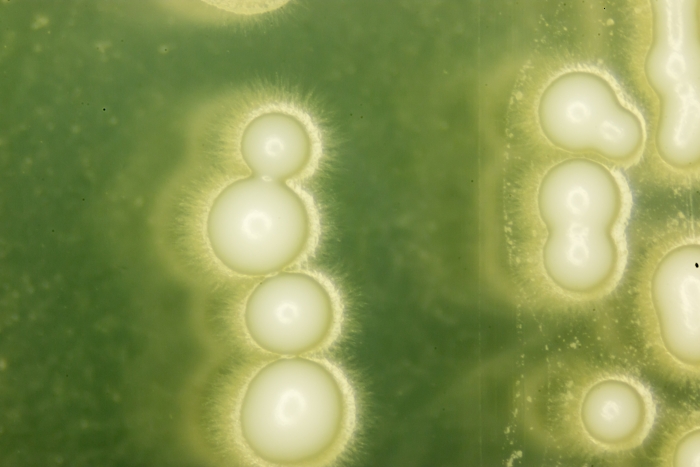
Fungi have similar cell structures to both animal and plant cells. They have a nucleus so are known as a eukaryotic cell. They also have a cytoplasm and cell membrane. Unlike animal cells however, fungi have a cell wall (like plant cells) which provides it with strength and support.
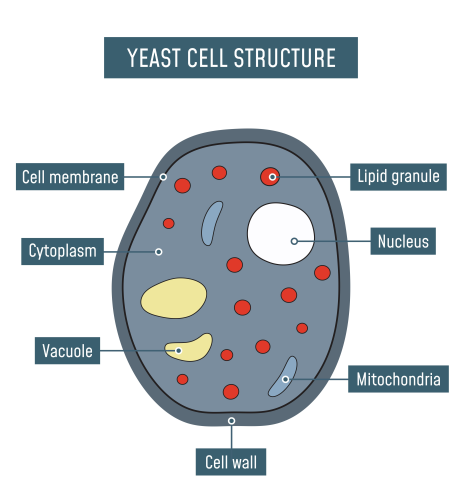
Another example of a unicellular organism is algae, which belongs to a group called the protozoa:
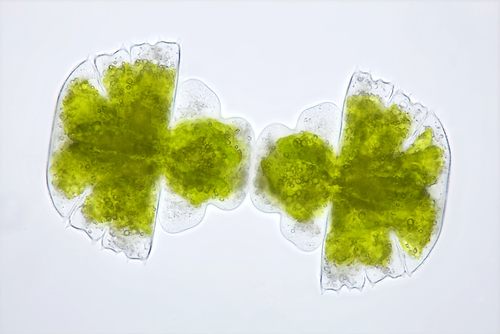
Algae have a lot in common with plants - their cells have cell walls, vacuoles and chloroplasts. Chloroplasts are used to trap the Sun's light energy to produce glucose through photosynthesis.
Vacuoles usually store water (or sap) in plants, whereas in algae it's often used to store food.
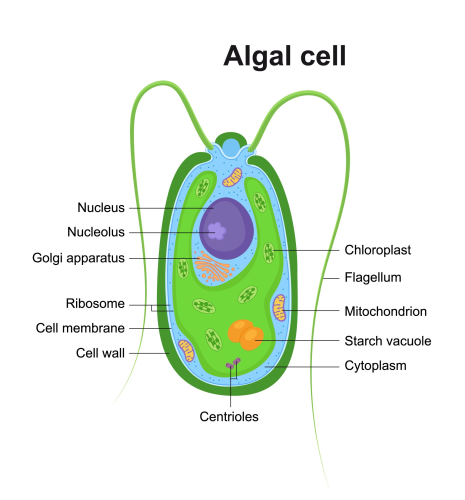
Protists (organisms that belong to the protozoa group) generally have a nucleus and so are eukaryotic. They also contain a cytoplasm and cell membrane (like plant and animal cells). Some have structures called cilia which are like tiny hairs, on its surface. These move and wave food towards itself to absorb.
Some protists also have flagella, which helps them to respond to the environment that they're in and to move. For example, protists can move towards sunlight in order to photosynthesise.
Bacteria are the smallest unicellular organism, followed by unicellular fungi. Protists are often the larger unicellular organism - they come in many different shapes and sizes.
These unicellular organisms have some similarities but there are many differences. That's because the number and types of bacteria, fungi and protist are huge.
Here is a summary of some of the similarities and differences between bacteria, fungi and protists:
| Bacteria | Fungi |
Protist |
|
| Similarities |
Unicellular Microscopic All have a cytoplasm, cell membrane and cell wall |
||
| Differences |
Prokaryote (no nucleus) Contains plasmids Some have flagella |
Eukaryote (has a nucleus) Can be multicellular No flagella Has a vacuole |
Eukaryote (has a nucleus) Can be multicellular Has cilia Some have flagella Some have chloroplasts and vacuoles |
In this activity, we're going to compare unicellular organisms.

You can look back at this page by clicking the red help button on the screen at any time.







